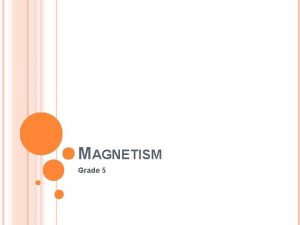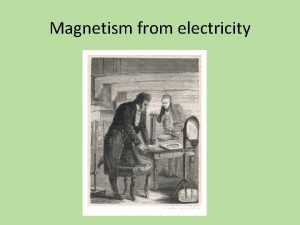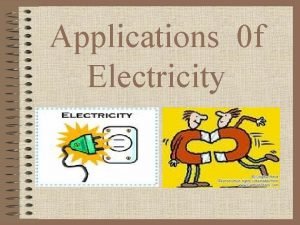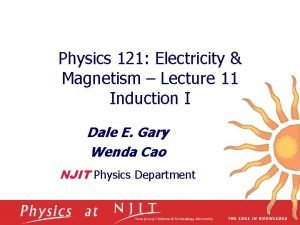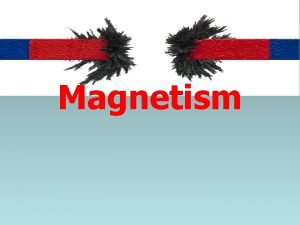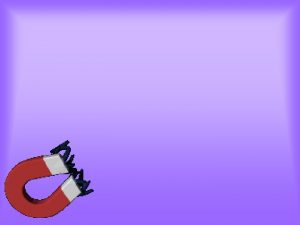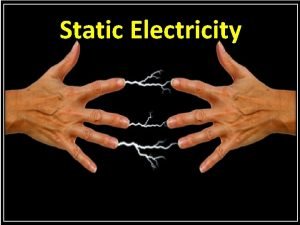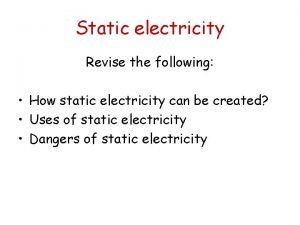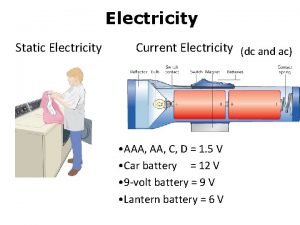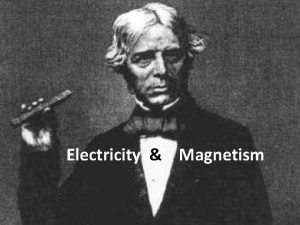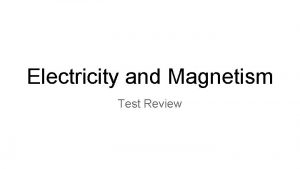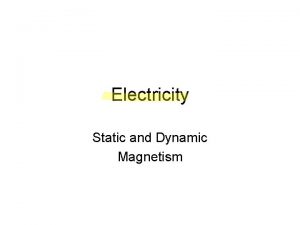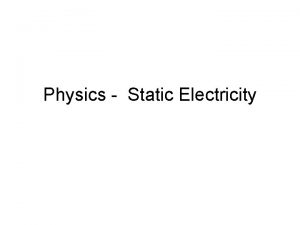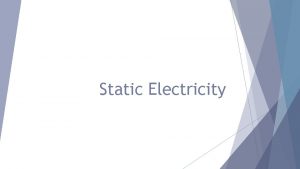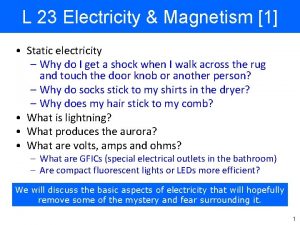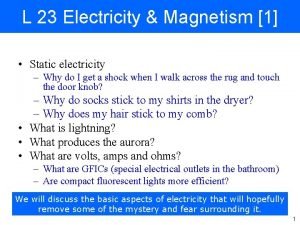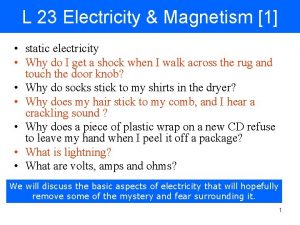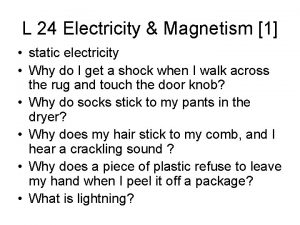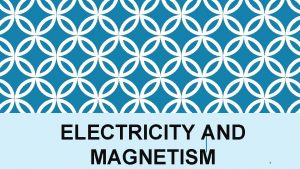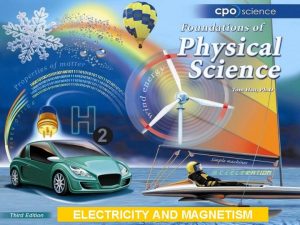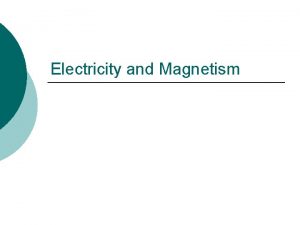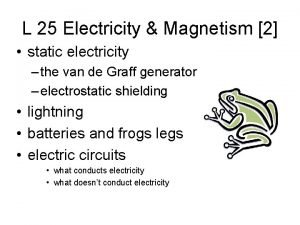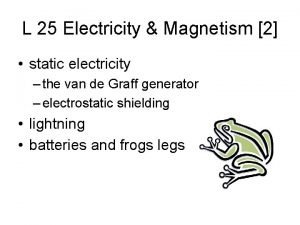L 24 Electricity Magnetism 1 static electricity Why
![L 24 Electricity & Magnetism [1] • static electricity • Why do I get L 24 Electricity & Magnetism [1] • static electricity • Why do I get](https://slidetodoc.com/presentation_image_h/159f1e865cc1a0aa44a58b1491b843ea/image-1.jpg)






















- Slides: 23
![L 24 Electricity Magnetism 1 static electricity Why do I get L 24 Electricity & Magnetism [1] • static electricity • Why do I get](https://slidetodoc.com/presentation_image_h/159f1e865cc1a0aa44a58b1491b843ea/image-1.jpg)
L 24 Electricity & Magnetism [1] • static electricity • Why do I get a shock when I walk across the rug and touch the door knob? • Why do socks stick to my shirts in the dryer? • Why does my hair stick to my comb, and I hear a crackling sound ? • Why does a piece of plastic wrap on a new CD refuse to leave my hand when I peel it off a package? • What is lightning? 1

It’s the CHARGE! • we know that stuff has MASS but. . . • it also has CHARGE! • the mass is what gives the gravitational force • the charge is what gives us ELECTRICITY! • You don’t always see the effects of charge because it’s stuck inside of atoms. 2

What is in atoms? • charge is just another property like mass • Atoms have a nucleus at its center and a electrons that move around it • The nucleus: two kinds of heavy particles • neutrons – have no charge • protons – have a positive charge • Two kinds of charge: positive and negative • Electrons and protons have the same magnitude of charge but electrons are and protons are + • The mass of the proton is about 2000 times the mass of the electron 3

Electric forces • charges exert electric forces on other charges – two positive charges repel each other – two negative charges repel each other – a positive and negative charge attract each other + + + The repulsive electric force between 2 protons is 1039 = 1, 000, 000, 000, 000 times stronger than the attractive gravitational force! 4

How Strong is the Electric Force between two charges? • It depends on how big the charges are, and how close they are – The bigger the charges, the bigger the force – The closer the charges, the bigger the force • This is known as Coulomb’s Law • The unit of charge is the Coulomb (C) Coulomb’s Law Q 2 Q 1 r 5

Conductors and Non- Conductors • Metals (copper, aluminum, iron) are conductors of electricity that means that charge can move through them • Plastics, wood, ceramics, and glass are nonconductors (or insulators) they do not let electricity flow through them • You should not stick a metal fork into an electrical outlet! • You could stick a plastic fork into an outlet without electrocuting yourself • Please do not try this! 6

What makes conductors conduct? • Atoms have equal numbers of positive and negative charges, so that a piece of material usually has no net charge the plusses and minuses cancel each other. • However, when you put many metal atoms (like copper) together an amazing thing happens one electron from each atom forgets which atom it belongs to. • All the homeless electrons are free to wander about inside the material 7

Current– charges moving around If I connect a battery to the ends of the copper bar the electrons in the copper will be pulled toward the positive side of the battery and will flow around. this is called current – flow of charge copper An electric circuit! Duracell + 8

Seeing and hearing electricity! The capacitor keeps charging until it reaches its limit. Charge storage device Capacitor Many Batteries 9

Fully loaded and ready to go! • The sudden discharging of the capacitor is accompanied with a big spark and a bang manmade lightning! • danger fully charged A spark occurs when there is enough energy released to cause the electrons in the air molecules to be ripped out of the molecules ionization 10

Danger High Voltage ! • The van de Graff can charge the sphere to more than 50, 000 volts! • This is enough to cause discharges to the surrounding air ionization or breakdown • The sparks excite air molecules which give off light 11

Both conductors and non-conductors can be charged! • Even though non-conductors do not have free electrons meandering about, they can be charged by friction • When you move your comb through your hair, the friction (rubbing) between the comb and hair can pull some of the electrons out of your hair and onto the comb • as a result your comb ends up with a net negative charge and attracts your hair which is now positive. 12

Charging by friction - triboelectricity • If you rub plastic with fur (e. g. cat or rabbit), electrons are rubbed onto the plastic making it negative • if you rub glass with silk, electrons are rubbed off the glass making it positive • the charge can be transferred to other objects. 13

The charging process • an object is charged positive (has a net positive charge ) if electrons are removed from it • an object is charged negative (has a net negative charge) if electrons are transferred to it • charges can be transferred from conductors or non-conductors but they can only move through conductors. • Charge is conserved in the transfer of charge the charge is merely passed from one object to another, no charge is lost in this process. 14

Attracting uncharged objects + + uncharged metal sphere • A negatively charged rod will push the electrons to the far side leaving the near side positive. • The force is attractive because the positive charges are closer to the rod than the negative charges 15

You can bend water with charge! The water molecule has a positive end a negative end. charged rod When a negative rod is brought near the stream of water, all the positive ends of the water molecules turn to the right and are attracted to the negative rod. stream of water 16

The Magic Wand 2 x 4 We can cause the 2 x 4 to move with electric forces 17

Can attract nonconductors also Even though nonconductors do not have free electrons that can move around, the molecules can be polarized – the positive and negative charges can be separated slightly ++ ++ 18

Charge is Conserved Example • 10 Coulombs of negative charge are transferred from object A to object B. What is the net charge on each object? • ANSWER: – object A has a net charge of +10 C – object B has a net charge of -10 C. +10 C A -10 C B 19

One Coulomb is a HUGE charge • To get a charge of one Coulomb on an object we would have to remove 6. 250 x 1018 electrons from it! • In the capacitor discharge demo, only 0. 01 C of charge were involved. 20

Seeing the effects of charge: the electroscope • the electroscope is a simple device for observing the presence of electric charge • it consists of a small piece of metal foil (gold if possible) suspended from a rod with a metal ball at its top • If a negatively charged rod is placed near the ball, the electrons move away because of the repulsion. 21 The two sides of the metal foil then separate.

Making Sparks: The Van de Graff Generator • The van de Graff generator is a device for building up a large electrical charge on a metal sphere. • The charge is generated by friction between a rubber belt and a roller. • the charge on the belt is transferred to the sphere by a brush. 22

Electric Potential voltage 9 Volt battery • The amount of charge on a charged sphere can be measured in terms of its electric potential or voltage • the more charge that is on the sphere, the higher its voltage • electric potential is measured in VOLTS • if I connect a 9 V battery to the sphere and the ground, it will have a potential of 9 V 23
 Static electricity and current electricity
Static electricity and current electricity Electricity n
Electricity n Magnetism vocabulary
Magnetism vocabulary Physics 102
Physics 102 Ib physics chapter 5
Ib physics chapter 5 Magnetism
Magnetism Magnetism jeopardy
Magnetism jeopardy Sph3u electricity and magnetism
Sph3u electricity and magnetism Electromagnet experiment hypothesis
Electromagnet experiment hypothesis Intensity of magnetisation
Intensity of magnetisation Grade 5 electricity and magnetism
Grade 5 electricity and magnetism Electricity and magnetism
Electricity and magnetism Electric fuse and circuit breaker graphic organizer
Electric fuse and circuit breaker graphic organizer Electricity and magnetism
Electricity and magnetism Electricity and magnetism
Electricity and magnetism Electricity and magnetism
Electricity and magnetism Andreas carlsson bye bye bye
Andreas carlsson bye bye bye Qvbsin theta
Qvbsin theta Why is magnetism an invisible force
Why is magnetism an invisible force Static electricity diagram
Static electricity diagram Static electricity painting
Static electricity painting Bill nye static electricity
Bill nye static electricity Electrons electricity
Electrons electricity Ampere unit
Ampere unit










